CONKLE’S HOLLOW
CONKLE’S HOLLOW in HOCKING HILLS
Conkle’s Hollow is one of the most scenic natural history destinations in Ohio and one of the 7 major hiking trails in Hocking Hills State Park, located in Southeastern Ohio about an hour SE of Columbus on Route 33 in Hocking County. The preserve is named after W.J. Conkle, an early visitor to the area known for carving his name and date into the western wall of the gorge in 1797.
The trail leading up the narrow, half-mile ravine is surrounded by sandstone cliffs that rise over 200 feet above and look down on a plethora of native hardwoods and beautiful wildflowers. The cliffs can be as close as 300 feet or less from edge to edge in certain areas, with a tree canopy so thick that some areas of the forest floor receive little to no sunlight.
Conkle’s Hollow offers adventure-seekers some of the highest cliffs in Hocking Hills State Park and the beautiful views that go along with these heights. The rim trail above the gorge is one for more experienced hikers, while the Lower Gorge trail has been recently optimized to accommodate visitors of all ability levels.
HIKE CONKLE’S HOLLOW
The Hocking Hills State Park system includes Ash Cave, Old Man's Cave, Rock House, Conkle's Hollow, Cedar Falls, Cantwell Cliffs, and Whispering Cave Trail. Each offers something truly unique and wonderful, with over 25 miles of one-way looped trail systems that are open to the public year-round from dawn to dusk. From forested trails to massive natural rock formations, the Hocking Hills region is a breathtaking gem hidden in the upper Appalachian Basin for all to visit and enjoy.
Download a Trail Map for Conkle’s Hollow and enjoy this relaxing walk in nature.
Conkle's Hollow State Nature Preserve
Hiking Conkle’s Hollow Trails
Anyone coming to Conkle’s Hollow is in for an adventure. This local treasure is one of 7k major hiking trails in Hocking Hills State Park. Situated in southern Ohio, it has two trails to hike: Lower Trail and Upper Trail. This rocky gorge is considered one of the deepest in Ohio but is still accessible on the Lower Trail by wheelchairs. This makes it a great place for many explorers of all ages and abilities to visit. This 1 hour hike is short enough for most visitors while Upper Trail is 2 miles long. It is more strenuous and not easily accessible with wheelchairs. Experienced hikers are recommended to try out this trail with moderate to steep inclines, uneven steps and even steeper cliff drops. The terrain is not for the faint of heart but it definitely is a lot of fun for the right individuals!
Rugged Terrain
The trails boast many ecologically beautiful spots including some waterfalls and cliffs. Unlike other hiking trails, the vertical cliffs can rise an impressive 200 feet above the mouth of the gorge. The narrowing also makes it interesting to navigate for experienced hikers. Around 350 millions years ago, this area of Ohio was under water (an ocean, to be exact). Hard to fathom, but rivers flowed into the area and brought with it fine grained sands. These deposits created finer textured silt and clay sediments over millions of years. The compressed layers of sandy rock are now called Black Hand sandstone, famous in this region. As the waters receded, new land surface dried out and eroded to form what is now Hocking Hills. This specific region, Conkle’s Hollow, was purchased in 1925 by the state of Ohio for preservation and public land use.
Legend of the Hollow
Though not quite as interesting as the legend of Sleepy Hollow, the legend of Conkle’s Hollow is quite fascinating. A petroglyph was etched in the gorge wall by early settlers. As legend has it, Native Americans robbed early settlers of their money on the Ohio River. They hid the money and wares in the cliffs. The trees and hemlock were pushed around to avoid passage of other settlers getting into their treasure. The stolen money thus remains hidden somewhere in the hollow without a way to find it as the etchings of old have eroded with time.
Chasing Waterfalls
Conkle’s Hollow follows Ash Cave as one of the premier places in the region to chase beautiful waterfalls. With its deep gorge and cliffs, it is covered in lush green foliage. Many people compare it to walking through Jurassic Park (without the dinosaurs). The paved trails are a great way to access Conkle’s Hollow and enjoy the beautiful views. High summer is not the best time to see water as levels are lower, but come in spring and fall when waters run freely for best views.
The Hills are alive with beautiful landscapes in Conkle’s Hollow. There is something about the serene hiking trails, caves and nature that bring people back time and again. People often come from all over to hike the surrounding hills and piggy back their trail hikes with these beautiful trails. Conkle’s Hollow is a perfect place to explore and learn about the history of the region while enjoying all the scenery has to offer.
FAQs
A: Conkle’s Hollow was named for W.J. Conkle. His name and the date 1797 are carved into sandstone in the gorge. According to an old legend, Native Americans (Shawnee, it is believed) once hid money in a small opening in this area. The opening was high up and the Shawnee chopped down a hemlock tree, then climbed up to hide the money they stole from white settlers. He was a visitor and perhaps someone in search of the money supposedly hidden there.
A: Two of the best ones are Upper and Lower trail, the two trails on site. The third thing people love to see are the waterfalls. Best viewing times are spring or fall when water levels are highest. Visitors come from all over the region to see the caves, cliffs and waterfalls.
A: Unfortunately, no wading or swimming is allowed in Conkle’s Hollow.
A: The site got its name from settler W.J. Conkle. It has nothing to do with the natural ecology of the area but it makes for interesting conversation or dinner party ‘stumper’ questions!
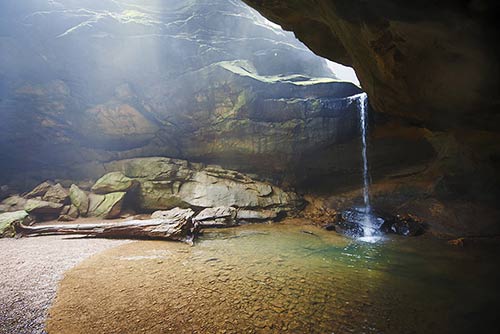
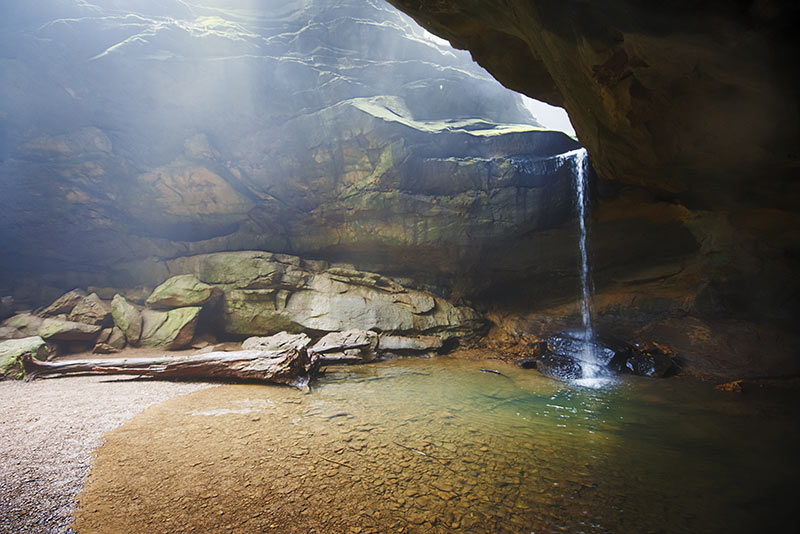
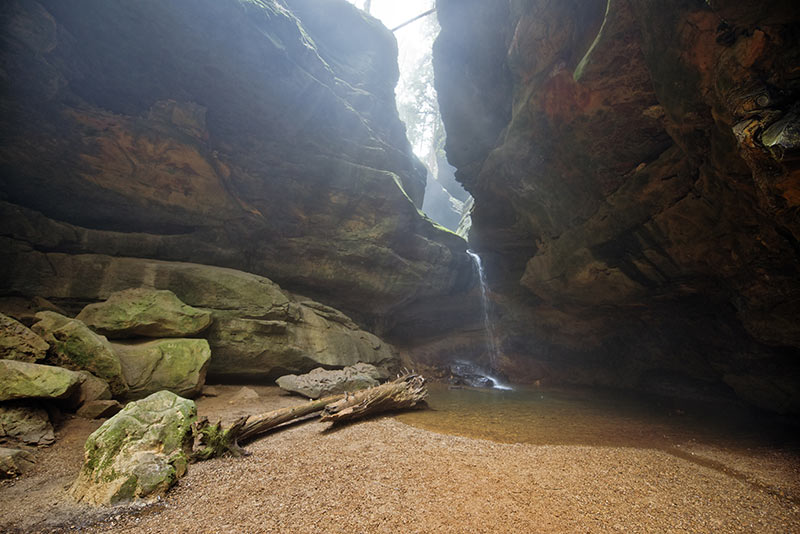
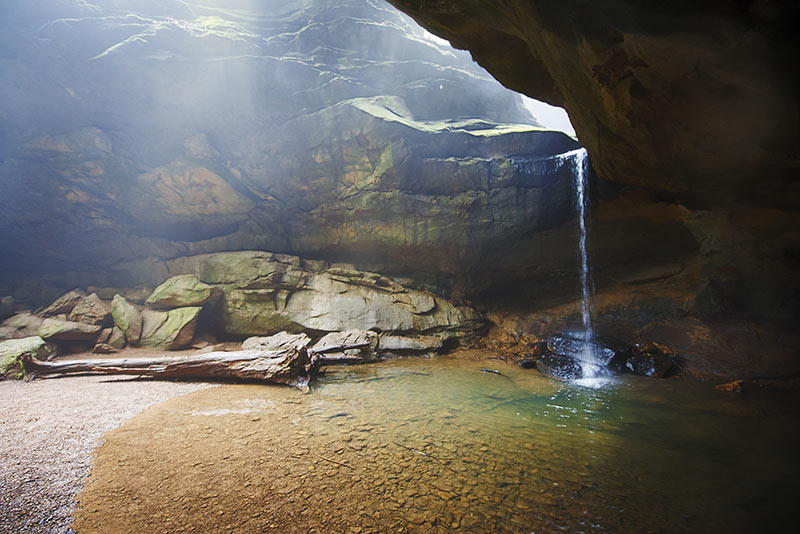


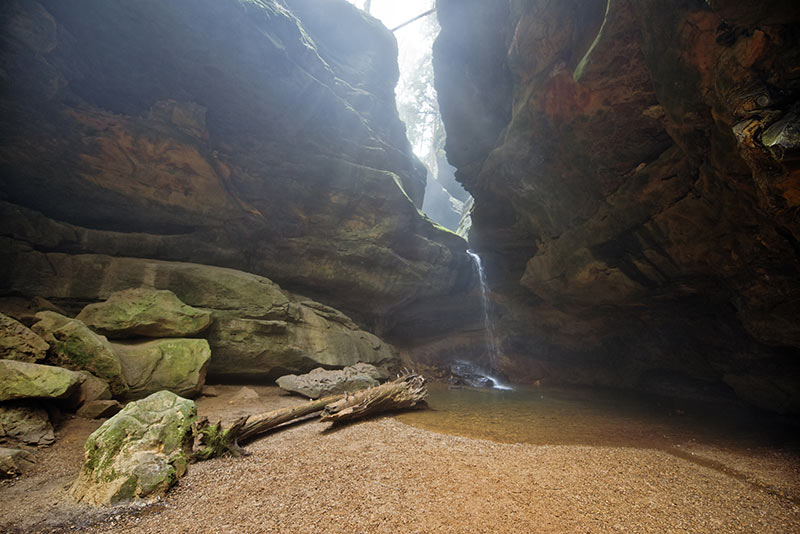
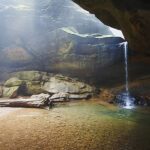
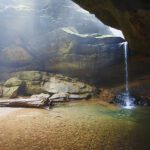


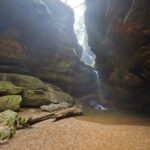
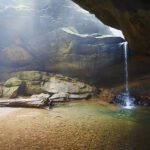










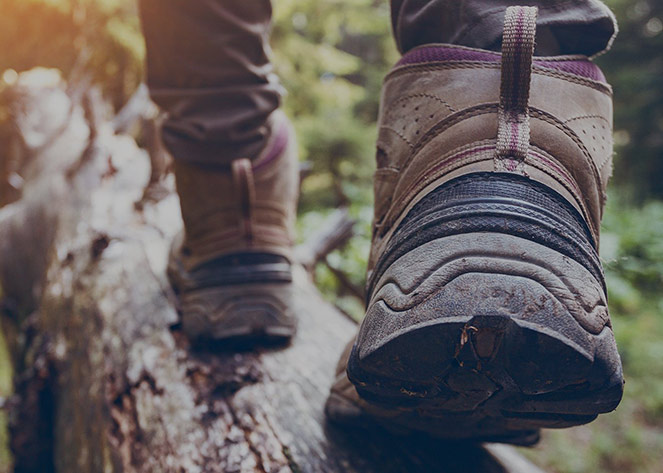

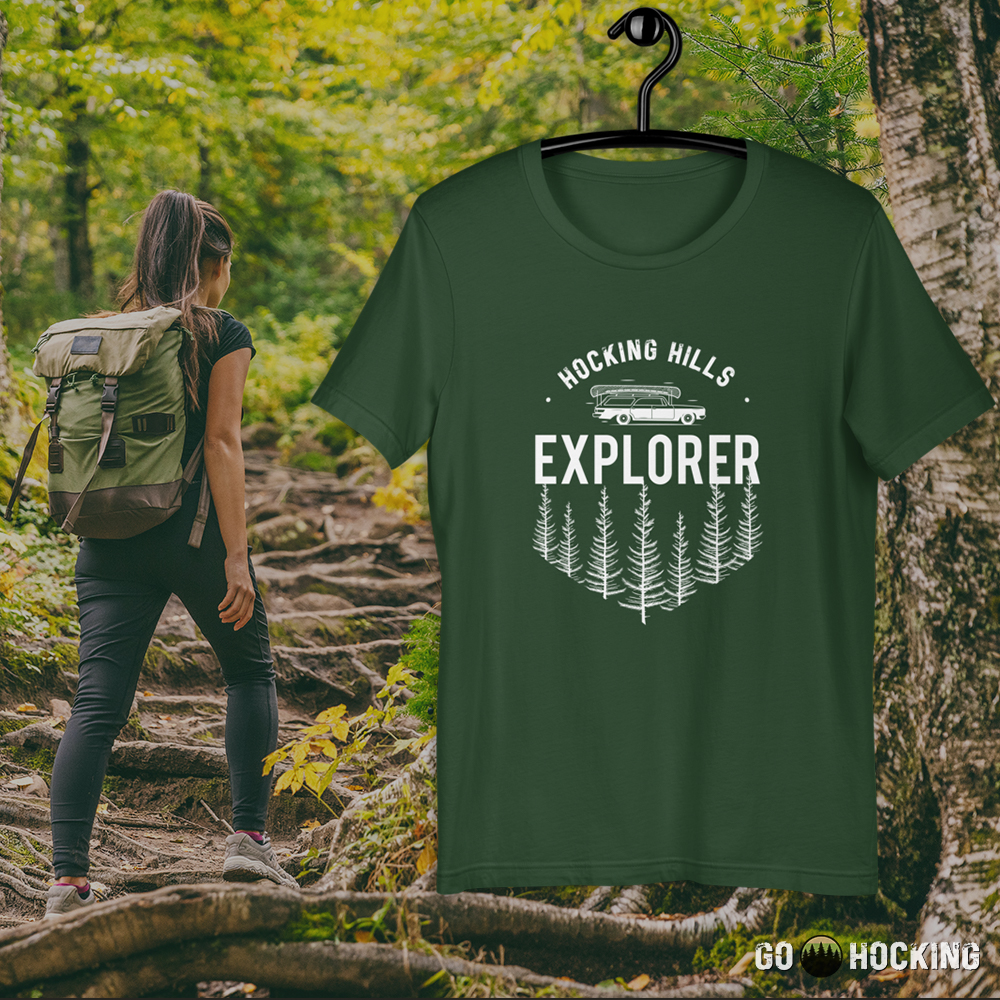

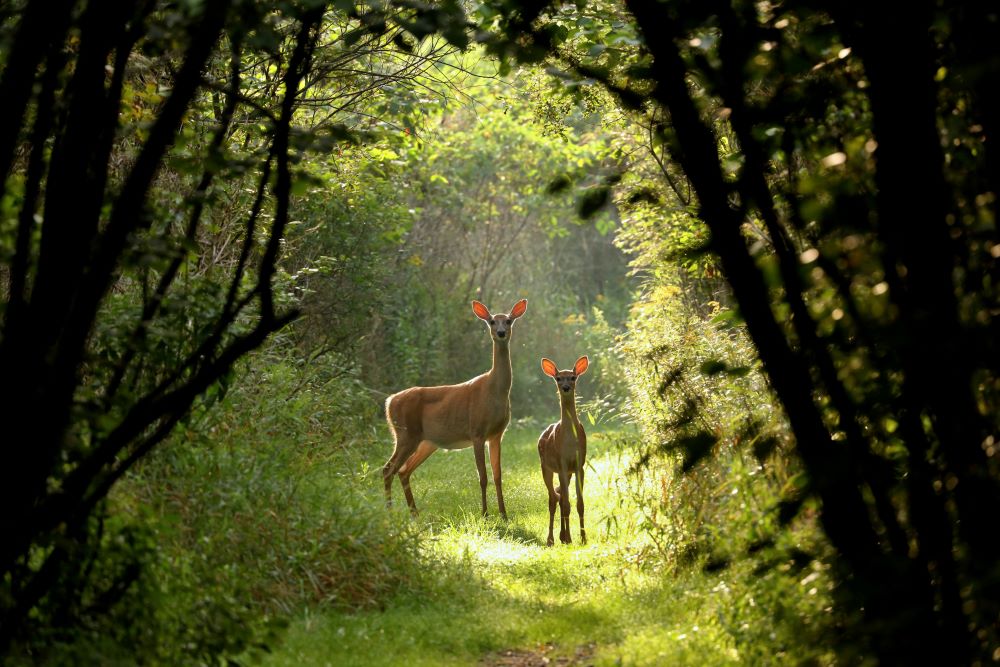
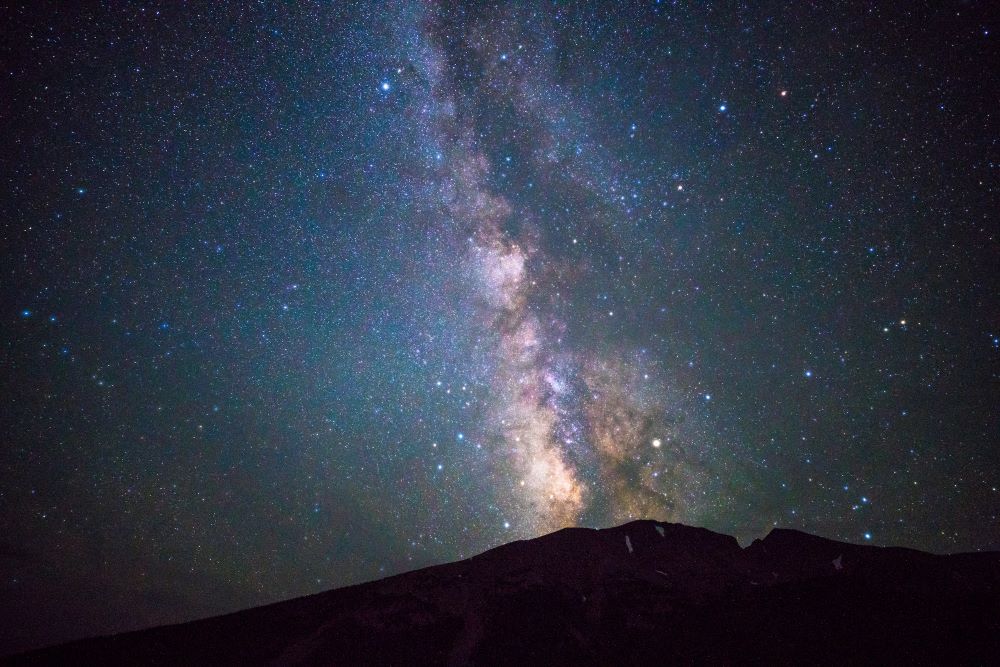

Share This Page